What Kinds of Plastic Can Be Welded? Top Weldable Plastics
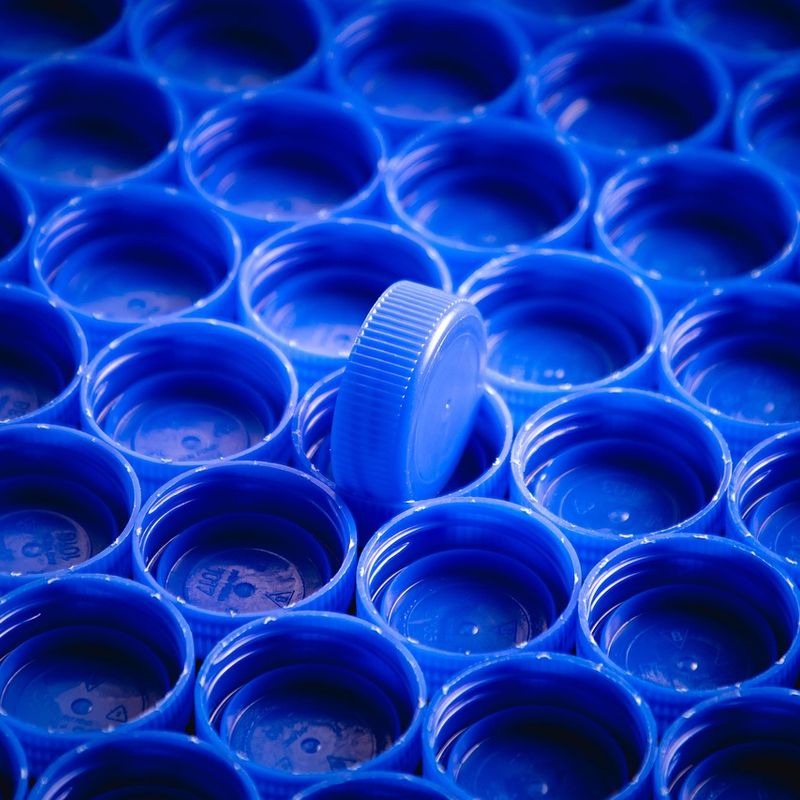
Plastic welding is a versatile technique used to join thermoplastic materials by applying heat and pressure. It offers strong, permanent bonds without the need for adhesives or fasteners, making it widely used in industries such as automotive, medical, electronics, and packaging.
However, not all plastics are suitable for welding. Thermoplastics like polypropylene (PP), polyvinyl chloride (PVC), and polyethylene (PE) can be melted and reformed, making them ideal for plastic welding like ultrasonic welding. In contrast, thermoset plastics, such as epoxy, cannot be welded as they do not re-melt after curing.
Understanding which plastics are weldable and selecting the appropriate welding technique can ensure optimal results. This article will explore the best weldable plastics and the proper welding methods for each.

Table of Contents
Types of Plastics Suitable for Welding
The Properties of Materials That Influence Plastic Welding
External Factors That Influence the Weldability of Plastics
Factors Affecting Plastic Weld Quality
Types of Plastic Welding Techniques
Advantages of Plastic Welding Over Other Joining Methods
The Role of Plastic Welding in Manufacturing and Industry
FAQs
Conclusion
Types of Plastics Suitable for Welding
Thermoplastic plastics are the most commonly welded plastic in the plastic welding industry. Unlike thermosets, which cannot be re-melted once formed, thermoplastics can be melted and reformed repeatedly without losing their chemical structure.
They can be heated to their melting point, fused, and then cooled to form a solid bond. Here are some of the most commonly weldable thermoplastic materials:
Acrylonitrile Butadiene Styrene (ABS)
ABS is known for its strength, toughness, and ease of processing. It's widely used in automotive parts, household goods, and electronics.
ABS plastic can be easily welded using techniques like ultrasonic welding, making it a popular choice for many manufacturing applications.
Polyethylene (PE)
PE is one of the most widely used plastics due to its low cost, chemical resistance, and flexibility. It is commonly used for packaging, pipes, and medical devices with PE plastic welders.
PE is well-suited for plastic welding techniques such as extrusion welding and butt welding.
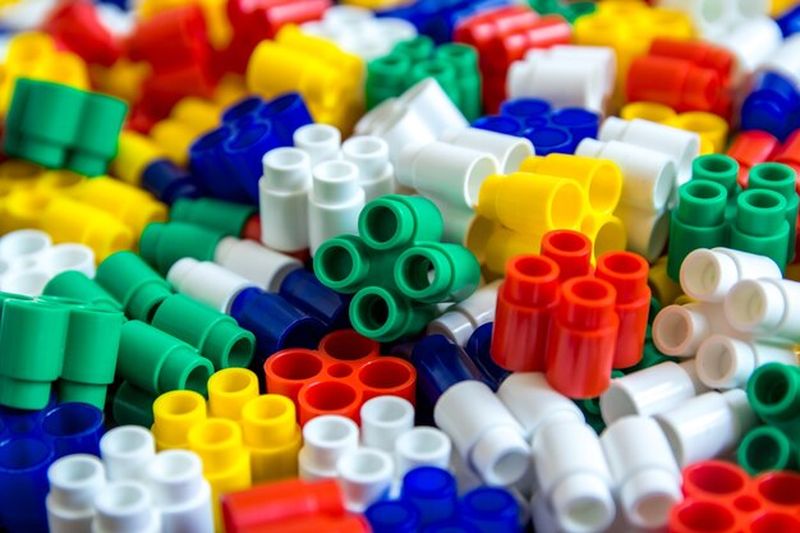
Polypropylene (PP)
PP is another versatile thermoplastic used in industries ranging from automotive to healthcare. Its chemical resistance and low friction properties are suitable for welding, especially when the joint needs to be durable and resistant to wear and tear.
Polyvinyl Chloride (PVC)
PVC is a rigid plastic used in a wide range of products, including pipes, doors, and windows. It can be easily welded using techniques like solvent welding, extrusion welding, and heat welding, providing strong and reliable joints.
Polystyrene (PS)
PS is a lightweight, inexpensive material used in consumer goods and packaging. While it is generally less durable than other plastics, it can be effectively welded using hot gas welding and other plastic welding methods.
Polycarbonate (PC)
Known for its optical clarity and toughness, polycarbonate is used in applications where high impact resistance is important. It is commonly welded using techniques such as laser welding, vibration welding, and ultrasonic welding, providing high-quality, durable bonds.
Polymethyl Methacrylate (PMMA)
PMMA, also known as acrylic, is a clear plastic used in applications like signage, displays, and lenses. PMMA can be welded using ultrasonic welding, creating clean, precise joints without the need for adhesives.
The Properties of Materials That Influence Plastic Welding
When welding plastics, certain material properties are vital in determining how well the welding process will perform.
Factors such as melting point, damping, elasticity module, and viscosity of the melt directly impact the quality of the weld. Let's examine each of these key properties:
1. Melting Point
The melting point is the temperature at which a plastic transitions from a solid to a liquid state. This property is vital for plastic welding as it determines the heat required to melt and fuse the material.
Plastics with lower melting points, such as polyethylene (PE) and polypropylene (PP), can be ultrasonic welded more easily, requiring less energy to achieve the proper bond.
Conversely, materials with high melting points, like polycarbonate (PC) and PEEK, require higher temperatures, which may necessitate specialized welding machines.
2. Damping
Damping refers to a material's ability to absorb and dissipate energy, which is a key factor in processes like ultrasonic welding or vibration welding.
Materials with high damping capabilities absorb more energy, making it easier for the weld to form. This leads to efficient energy transfer and stronger bonds.
Low-damping materials, however, may require more energy input and longer welding times to achieve optimal results. Finding the right balance between damping and energy consumption is key to achieving efficient welding.

3. Elasticity Module
The elasticity module (or modulus of elasticity) refers to a material's resistance to deformation under applied stress. High elasticity means the material is more rigid and resists deformation, making it harder to mold and fuse during welding.
While these materials can form strong bonds, they may require more force to join properly. On the other hand, plastics with a lower elasticity module are more flexible, making them easier to weld but potentially resulting in weaker joints if not properly handled.
4. Viscosity of the Melt
Viscosity describes how thick or fluid the material is when it reaches its molten state. High-viscosity plastics resist flow, making it harder for the molten plastic to bond effectively with the other material.
In contrast, low-viscosity materials flow easily and form quick bonds, but if the melt is too thin, it can lead to weak joints.
The optimal viscosity can ensure that the material flows sufficiently to form a strong bond while maintaining adequate thickness for durability.
External Factors That Influence the Weldability of Plastics
In addition to the inherent material properties, several external factors can also affect how well plastics can be welded. These factors include additives and environmental conditions that can either enhance or hinder the weldability of plastics.
1. Bad Influence
Additives (e.g., Fire Retardants)
Some plastics contain additives, such as fire retardants, to improve safety. However, these additives can negatively affect the weldability of the plastic.
Fire retardants can increase the material's thermal resistance, making it harder to achieve the required melting temperature for welding. Additionally, these chemicals may interfere with the bonding process, leading to weak joints or incomplete fusions.
Moisture (Especially for Polyamides)
Moisture content in plastics, particularly polyamides (nylons), can also negatively influence the welding process. Polyamides are highly hygroscopic, meaning they absorb water from the environment.
Excess moisture can lead to incomplete melting, poor bonding, or bubbling during the welding process, compromising the quality of the weld. It's necessary to properly dry materials before welding to ensure a clean and strong bond.
2. Good Influence
Glass Fibers
Glass fibers are commonly used as fillers to reinforce plastics and improve their mechanical properties. Adding glass fibers to a plastic material can enhance its strength, stiffness, and resistance to wear.
Importantly, glass fibers also improve the weldability of some materials by promoting better heat distribution during the welding process. This leads to a stronger and more uniform bond.
Glass Beads
Like glass fibers, glass beads are often incorporated into plastics to improve their properties. These beads can enhance the weldability of some materials by improving the material's flow and heat distribution during welding.
Glass beads help reduce the risk of material degradation, ensuring that the welded joints maintain their integrity over time.
Factors Affecting Plastic Weld Quality
The quality of a plastic weld depends on several variables that can influence the success of the process. These factors include temperature, pressure, material type, and welding technique.
Bearing in mind how each of these elements impacts the welding process, manufacturers can optimize conditions for strong, reliable, and long-lasting welds.
1.Temperature
The plastic must be heated to its melting point for a proper bond to form. If the welding temperature is too low, the material will not melt sufficiently to create a strong weld.
Conversely, excessively high temperatures can cause material degradation, reducing the strength and durability of the weld.
In thermoplastic welding, controlling temperature is especially important to ensure the appropriate melting and bonding characteristics of the material.
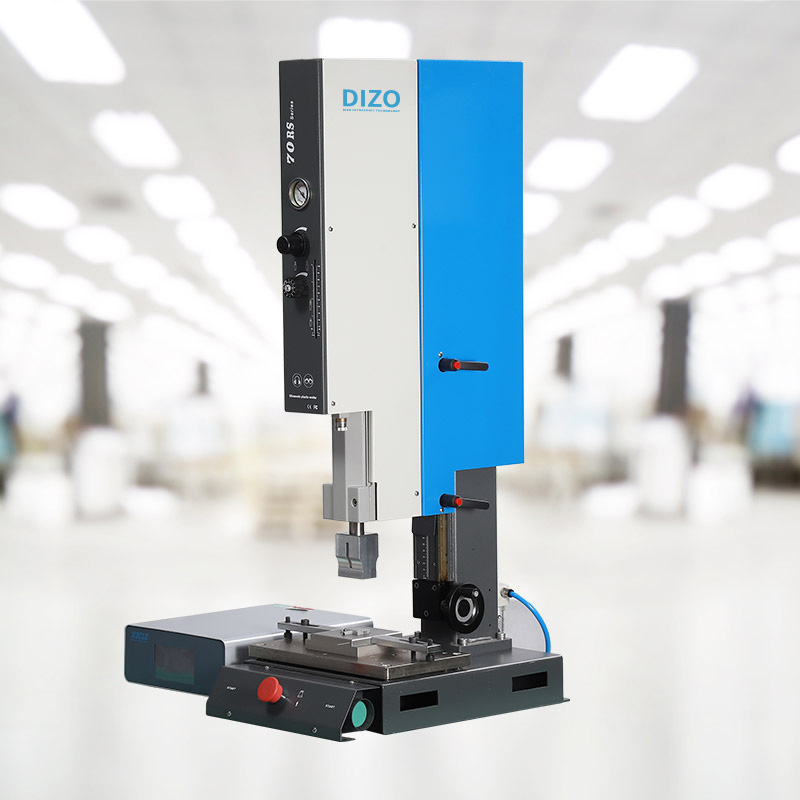
2. Pressure
Pressure is another key variable in plastic welding. The correct amount of pressure ensures that the molten plastic is pressed together properly, facilitating a strong and uniform bond.
Insufficient pressure may result in incomplete bonding, leading to weak joints.
On the other hand, too much pressure can cause the material to deform or squeeze out too much-molten plastic, weakening the joint.
Fine-tuning pressure levels based on materials and welding methods is crucial for quality welds, particularly in thermoplastic welding where the type of ultrasonic welding plastic, like PP welding or PVC plastic welding, influences the required pressure levels.
3. Material Type
Different plastics have unique characteristics that affect how they react to heat and pressure. Thermoplastics such as PE, PP, and PVC are commonly welded because they can be easily melted and reformed.
However, materials like thermosets (e.g., epoxy) are more challenging to weld because they cannot be remelted once cured.
Identifying the properties of the material being welded, such as the specific conditions for PVC plastic welding, is significant to determine the right welding parameters. PP welding also requires particular attention to the material's behavior under heat and pressure.
Types of Plastic Welding Techniques
There are several methods used to weld plastics, each with unique advantages suited to different applications. These include ultrasonic welding, hot plate welding, laser welding, and vibration welding.
Understanding the strengths and limitations of each method can help manufacturers select the best technique for their needs.
1. Ultrasonic Welding
Ultrasonic welding uses high-frequency sound waves to generate heat and melt plastic surfaces together. This technique is known for its precision, speed, and energy efficiency.
It is commonly used in applications requiring small parts and high-volume production, such as electronics and automotive components.
The process produces strong, clean bonds without the need for adhesives or external heat. Ultrasonic welding for plastic is often used in thermoplastic welding, including PP welding, due to the material's ability to melt quickly under heat.
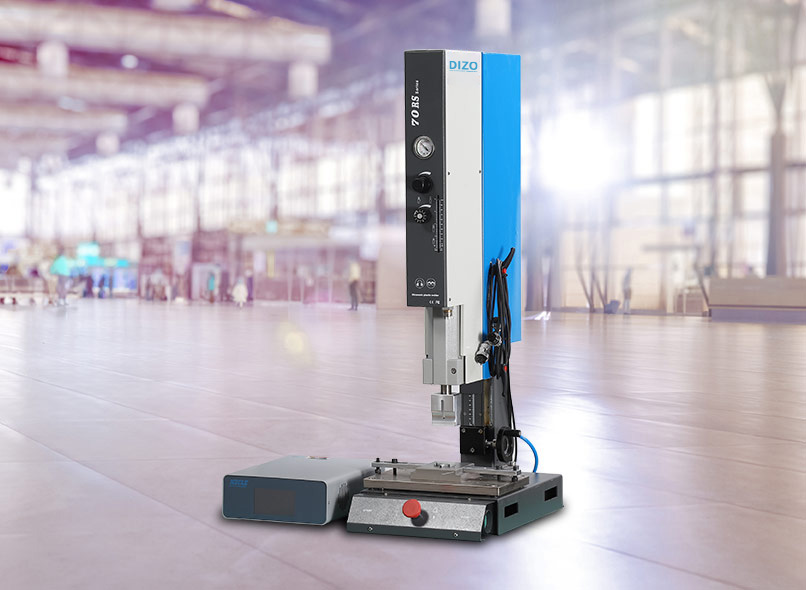
2. Hot Plate Welding
Hot plate welding involves heating two plastic parts using a hot plate and then pressing them together to form a bond. This method is well-suited for thicker materials and larger parts. It is commonly used in industries such as automotive and packaging.
Hot plate welding is versatile, but it requires longer cycle times compared to ultrasonic welding and may produce more waste material. PVC plastic welding is often performed using hot plate welding due to the need for consistent, even heat distribution.
3. Laser Welding
Laser welding uses focused laser beams to heat and melt the plastic at precise points, forming a bond. This technique is highly accurate and produces clean, strong welds with minimal heat-affected zones.
Laser welding has applications that require high precision, such as medical devices and microelectronics.
Laser welding also offers the advantage of no direct contact with the material, reducing the risk of contamination. Thermoplastic welding, including PVC plastic welding, benefits from the precision and minimal thermal influence of laser welding.
4. Vibration Welding
Vibration welding uses mechanical vibrations to generate heat at the interface between two plastic parts, melting them together. This method is well-suited for larger parts and offers high-strength bonds.
Vibration welding is particularly useful in the automotive and consumer goods industries, where large volumes of durable components are required.
The technique is fast and efficient, with no need for external adhesives or heat sources. PP welding often benefits from this technique, especially for parts that need robust, permanent joints.
Advantages of Plastic Welding Over Other Joining Methods
Plastic welding offers several advantages over traditional joining methods such as adhesives, screws, or mechanical fastening. These benefits make it an increasingly popular choice for manufacturers across various industries.
1. Strong, Durable Bonds
Unlike adhesives, which may degrade over time, plastic welding creates permanent, durable bonds that are resistant to environmental factors such as temperature, moisture, and chemicals.
The welded joint is typically as strong as or stronger than the base material, ensuring long-lasting performance.
For thermoplastic welding, including PP welding and PVC plastic welding, this means that the welded parts retain their integrity under harsh conditions.
2. No Additional Materials Needed
Plastic welding eliminates the need for additional bonding agents like adhesives or fasteners, reducing material costs and simplifying the manufacturing process.
This also eliminates the risk of contamination or weakening that can occur with the use of external materials. In either PP welding or PVC plastic welding, no extra substances are required to ensure a solid bond.
3. Faster Production Cycles
Plastic welding techniques such as ultrasonic and vibration welding are fast and efficient, leading to shorter production cycles. This results in higher throughput and reduced production costs, making plastic welding an ideal solution for high-volume manufacturing.
Thermoplastic welding methods can significantly speed up production times, especially in mass-production environments.
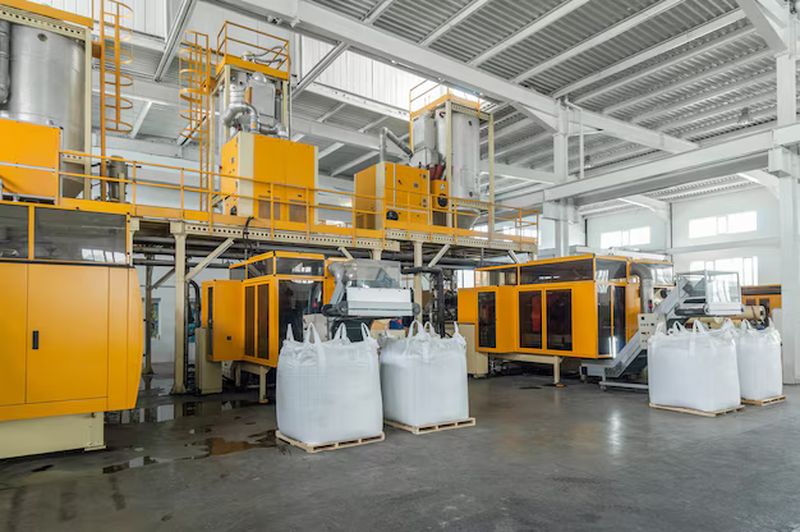
4. Clean and Environmentally Friendly
Plastic welding does not require solvents or chemicals, making it a cleaner and more environmentally friendly alternative to adhesive bonding.
The absence of hazardous materials contributes to a safer workplace and a reduced environmental impact. This is particularly beneficial for processes like PVC plastic welding, where traditional adhesive methods may involve harmful chemicals.
5. Flexibility and Precision
Plastic welding techniques allow for precise control over the welding process, ensuring high-quality bonds with minimal risk of defects.
This flexibility is particularly beneficial in industries requiring complex shapes, small parts, or delicate components, such as electronics and medical devices.
Both PP welding and PVC plastic welding offer the flexibility to create accurate, high-strength bonds with excellent control over the welding process.
The Role of Plastic Welding in Manufacturing and Industry
Plastic welding has become an indispensable technique in a variety of manufacturing sectors, offering high precision, efficiency, and cost-effectiveness.
This process is widely used in industries such as automotive, medical, electronics, and packaging, where strong, durable bonds are critical for product performance.
Let's explore how plastic welding plays a crucial role in these key industries.
1. Automotive Industry
In the automotive sector, plastic welding is used for manufacturing and assembling a wide range of parts, from interior components like dashboards and seat frames to exterior parts like bumpers and trims.
Thermoplastic welding, particularly PP welding, allows for the production of lightweight yet durable parts that meet safety, aesthetic, and performance requirements.
The precision and speed of welding methods like ultrasonic and vibration welding are especially beneficial for high-volume automotive production lines.
2. Medical Industry
In the medical field, plastic welding ensures the production of reliable, sterile, and safe devices such as syringes, IV bags, and medical packaging. The need for clean, precise welds is critical in medical devices to maintain the integrity of the product and ensure patient safety.
Plastic welding is particularly useful in producing high-quality joints without compromising the materials' biocompatibility, which is essential for medical applications.
3. Electronics Industry
The electronics industry benefits from plastic welding techniques for producing durable, high-performance components like mobile phone housings, circuit boards, and connectors.
The ability to create strong, clean, and precise welds without the use of adhesives is key for producing reliable electronic devices that meet high standards of quality and durability.
For example, PP welding is often used to create lightweight yet durable components that are resistant to heat and stress, which is crucial for electronics.
4. Packaging Industry
Plastic welding ensures that packaging materials are sealed efficiently and securely, preventing leaks and contamination. With a growing emphasis on sustainability, PVC plastic welding is commonly used in packaging applications due to its ability to form strong, secure seals without the need for adhesives.
FAQs
How strong are plastic welds?
Plastic welds can be as strong, if not stronger, than the base material itself. The strength of the weld depends on factors such as the type of plastic, welding technique, and welding parameters like temperature and pressure.
Properly executed plastic welding results in durable, long-lasting bonds that can withstand various environmental conditions. For example, PP welding or PVC plastic welding creates bonds that are typically as strong as or stronger than the plastic itself.
What plastics cannot be welded?
Not all plastics are suitable for welding. Thermoset plastics, such as epoxy and phenolic, cannot be welded because they cannot be re-melted once they have cured. In contrast, thermoplastics like PE, PP, PVC, and ABS are compatible with welding because they can be heated, melted, and reformed.
How do you determine if a plastic is weldable?
To determine if a plastic is weldable, consider its material type, melting point, and chemical composition. Thermoplastics are generally weldable, while thermosets are not.
Additionally, factors like the plastic's molecular structure and additives can influence its weldability. Testing under controlled conditions can also help verify if the material is suitable for welding, especially for materials like PP welding or PVC plastic welding.
Are there safety risks associated with plastic welding?
While plastic welding is generally safe, it does involve the use of heat and pressure, so safety precautions must be taken.
Risks such as burns, inhalation of fumes, or exposure to high temperatures can be mitigated by using appropriate personal protective equipment (PPE), following proper safety protocols, and ensuring proper ventilation in the work area.
What is the main difference between plastic welding and metal welding?
The main difference between plastic welding and metal welding lies in the material properties and welding methods.
Plastic welding involves heating and fusing thermoplastic materials, which are capable of re-melting, whereas metal welding involves melting metal and often adding filler material to create a strong bond.
Plastic welding techniques generally require lower temperatures compared to metal welding and often do not require fillers or external adhesives.
Conclusion
Plastic welding is a versatile and efficient technique that has become essential across various industries. Whether used in the automotive, medical, electronics, or packaging sectors, plastic welding provides strong, durable, and precise joints that are integral to the functionality of numerous products.
By understanding the different types of plastics that can be welded and the factors that influence the welding process, manufacturers can optimize production, reduce costs, and ensure the creation of high-quality, long-lasting products.
As this technology continues to evolve, its role in modern manufacturing will only expand, offering new possibilities for innovation and efficiency.






